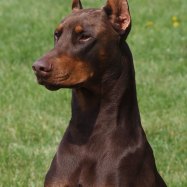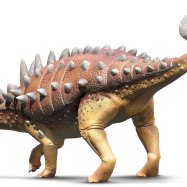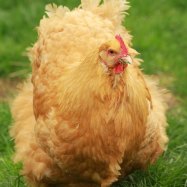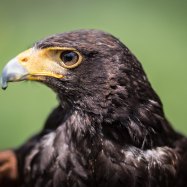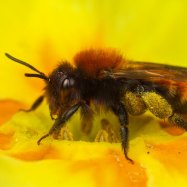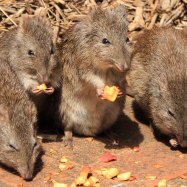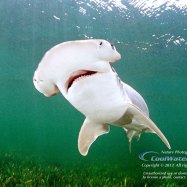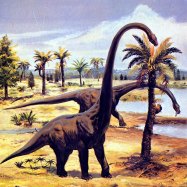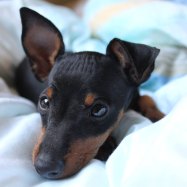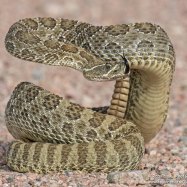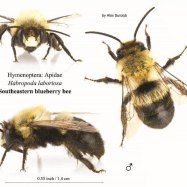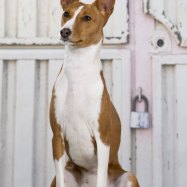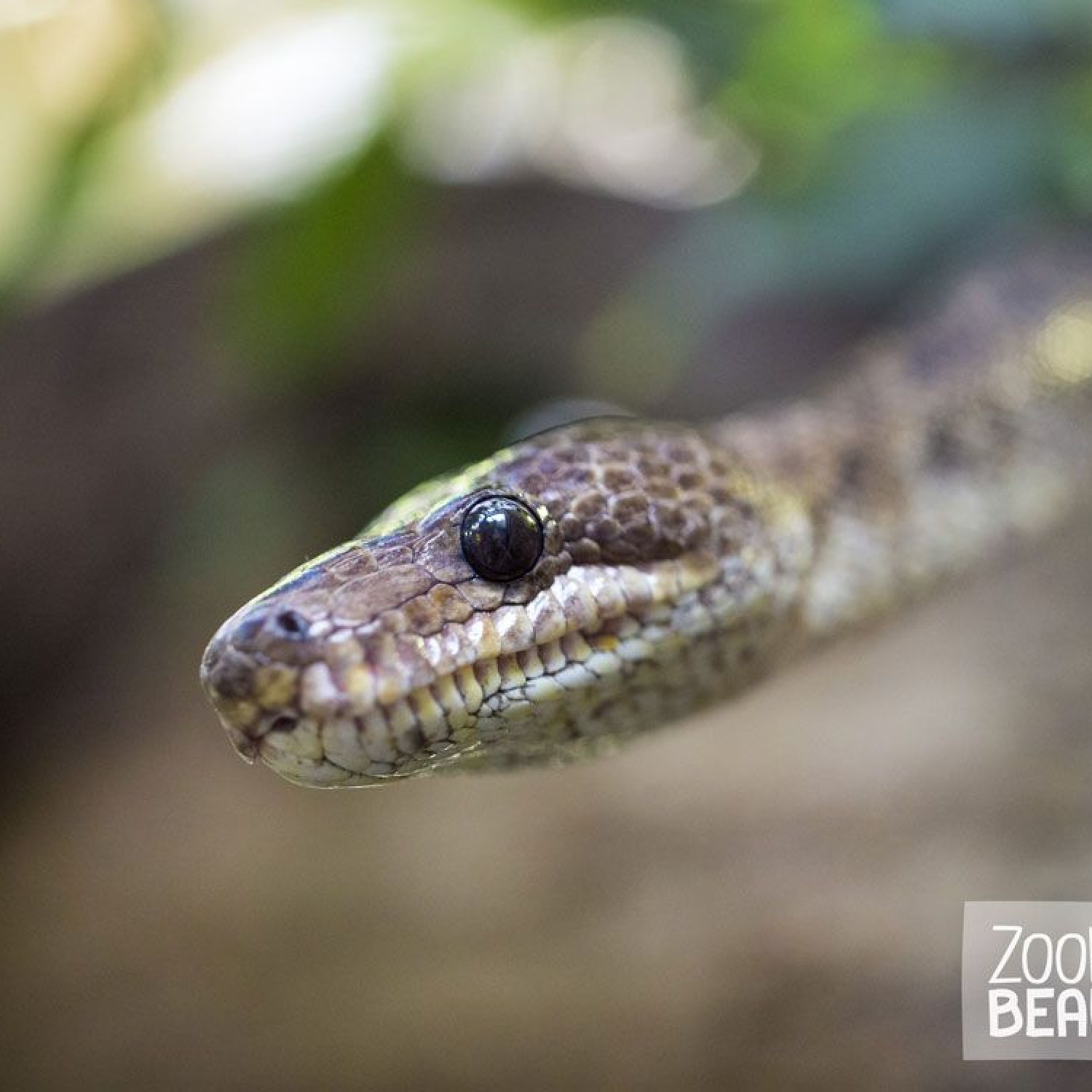
Cuban Boa
Up to 13 feet
The Cuban Boa, found in Cuba, is a large and muscular snake that can grow up to 13 feet in length. Known for their distinct head and tail, these snakes are part of the Boidae family. Despite their size, they are non-venomous and play an important role in their ecosystem as predators. #CubanBoa #Cuba #Boidae #snake #predator #ecosystem
Animal Details Summary:
Common Name: Cuban Boa
Kingdom: Animalia
Habitat: Tropical and subtropical forest and woodland
The Majestic Cuban Boa: A Fascinating Snake Found Only in Cuba
When you think of Cuba, images of beautiful beaches, vintage cars, and vibrant culture may come to mind. But hidden within its tropical and subtropical forests and woodlands lives a fascinating creature that many may not be aware of - the Cuban Boa. This large, muscular snake is endemic to Cuba, meaning it can only be found on this Caribbean island. With its impressive characteristics and unique features, the Cuban Boa is a species worth learning about Cuban Boa.The Cuban Boa, scientific name Chilabothrus angulifer, is also known as the Cuban Ground Boa or the Cuban Rock Boa. It belongs to the Boidae family, which is the same family as other large constrictor snakes like pythons and anacondas. This family also includes the smaller boa constrictors found in the Americas. The Cuban Boa is one of the largest snakes in its family, with a maximum length of up to 13 feet. Let's dive deeper into this remarkable reptile and discover what makes it such a unique species.
Physical Characteristics
The Cuban Boa has a large, muscular body with a distinct head and a long tapering tail. Despite its size, it has a slender build compared to other boa species. Its head is elongated, slightly flattened, and triangular in shape. Its eyes are positioned on the top of its head, giving it a better view of its surroundings Cassowary. This feature is crucial for the Cuban Boa as it is a nocturnal species, meaning it is most active at night.One of the most striking features of the Cuban Boa is its coloration, which can vary depending on its locality within Cuba. Generally, it has a brown or beige background color with darker markings that can range from dark brown to black. This coloration helps the snake blend in with its surroundings, making it difficult to spot in its natural habitat.
A unique characteristic of the Cuban Boa is that its color can also change depending on its reproductive status. During the breeding season, female snakes become lighter in color to attract males, while males become darker to attract females. This phenomenon is known as sexual dichromatism.
Habitat and Distribution
As its name suggests, the Cuban Boa is endemic to Cuba and is only found on this island. It is a terrestrial species, meaning it lives on land, and can be found in a variety of habitats, including tropical forests, subtropical woodlands, and even agricultural areas. It is an excellent climber and can often be found in trees, especially when searching for prey.Within Cuba, the Cuban Boa is widespread and can be found throughout the island, including some of the smaller surrounding islands like Isle of Youth. Its distribution is closely tied to the availability of food, as it primarily feeds on small mammals like rodents, birds, and lizards. This species is also known to be opportunistic feeders and has been observed eating other snakes and even bats.
One of the reasons the Cuban Boa is considered a threatened species is due to habitat loss. As human development expands, the snakes' natural habitat is being destroyed, making it difficult for the species to survive. Additionally, they are sometimes targeted by farmers who view them as a threat to their livestock.
Reproduction
The reproductive cycle of the Cuban Boa is an incredible feat of nature. Unlike many other snake species, which may lay eggs, the Cuban Boa gives birth to live young. However, it does not produce live young through traditional live birth, known as viviparity. Instead, it practices a rare method called ovoviviparity.Ovoviviparity is a form of reproduction where the female retains the eggs inside her body until they hatch. She then gives birth to fully formed, independent snakes, a process that can take months. The female will often give birth to a large number of offspring, with litter sizes reaching up to 50 snakes. The young are then left to fend for themselves, as the mother does not provide any parental care.
Conservation Efforts
The Cuban Boa is listed as a threatened species by the International Union for Conservation of Nature (IUCN), with its population on the decline. As mentioned earlier, habitat loss plays a significant role in the decline of this species. However, there are efforts in place to conserve the Cuban Boa and its natural habitat.One of the initiatives is the establishment of protected areas, such as national parks and nature reserves, where the snakes can live and thrive without human interference. Another conservation approach is education and awareness. By educating the public about the importance of this species in maintaining a balanced ecosystem, it can help reduce the negative attitudes and actions towards the Cuban Boa.
Boa Constrictors in Cuban Culture
Being a species that is only found in Cuba, the Cuban Boa plays a special role in the island's culture and history. The snake holds a sacred place in Afro-Cuban religions like Santeria, where it is seen as a symbol of strength and spiritual transformation.In addition, the Cuban Boa has been featured in various forms of art, including paintings, sculptures, and jewelry. Its distinct appearance and status as a unique species have made it a popular subject among local artists.
In Conclusion
The Cuban Boa may not be as well-known as other large snake species, but its characteristics and significance cannot be overlooked. From its color-changing abilities to its unique form of reproduction, this snake is undoubtedly one of a kind. As efforts to protect and conserve this species continue, we can hope to see the Cuban Boa thrive and remain an essential part of Cuba's natural environment.

Cuban Boa
Animal Details Cuban Boa - Scientific Name: Chilabothrus angulifer
- Category: Animals C
- Scientific Name: Chilabothrus angulifer
- Common Name: Cuban Boa
- Kingdom: Animalia
- Phylum: Chordata
- Class: Reptilia
- Order: Squamata
- Family: Boidae
- Habitat: Tropical and subtropical forest and woodland
- Feeding Method: Carnivorous
- Geographical Distribution: Cuba
- Country of Origin: Cuba
- Location: Cuba
- Animal Coloration: Varies depending on locality, typically brown or beige with dark markings
- Body Shape: Large, muscular body with a distinct head and tail
- Length: Up to 13 feet
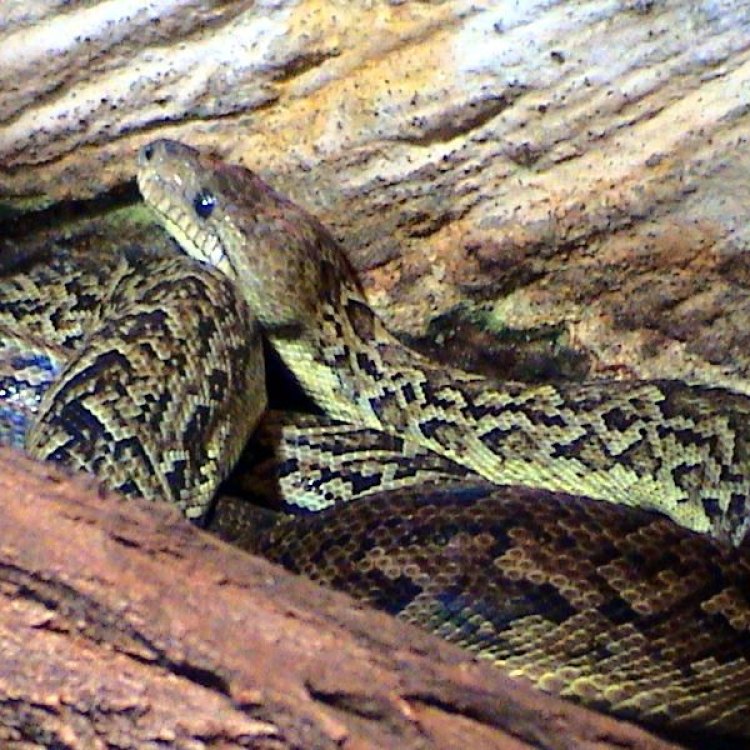
Cuban Boa
- Adult Size: 7-10 feet
- Average Lifespan: 25-30 years
- Reproduction: Sexual
- Reproductive Behavior: Mating occurs during the winter months
- Sound or Call: Hissing sound when threatened
- Migration Pattern: Non-migratory
- Social Groups: Solitary
- Behavior: Nocturnal, spends most of its time in trees
- Threats: Habitat loss and fragmentation, hunting
- Conservation Status: Critically Endangered
- Impact on Ecosystem: Plays a key role as a predator in its ecosystem
- Human Use: May be kept as pets
- Distinctive Features: Large size, distinctive coloration
- Interesting Facts: It is one of the largest boa species in the world
- Predator: Humans, birds of prey
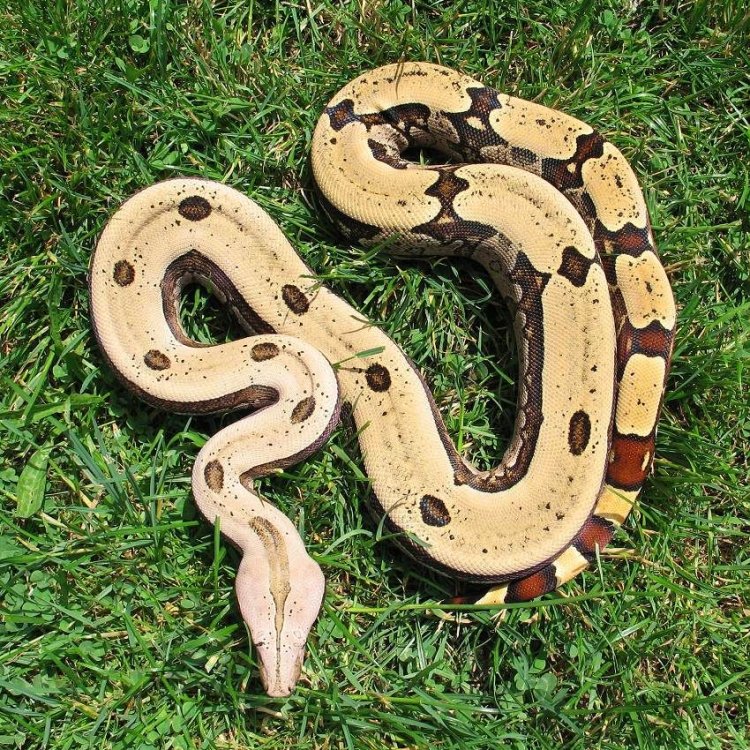
Chilabothrus angulifer
The Mighty Cuban Boa: A Critical Look at the Largest Boa Species in the World
When one thinks of snakes, often images of slithering, venomous serpents come to mind. However, not all snakes fit this stereotype. Some are majestic giants, with unique features and behaviors that make them stand out in the reptile world. One such species is the Cuban Boa PeaceOfAnimals.Com.The Cuban Boa, scientifically known as Chilabothrus angulifer, is a non-venomous, large snake found only in Cuba and a few surrounding islands in the Caribbean. With an adult size of 7 to 10 feet and an average lifespan of 25-30 years, this striking boa species is a sight to behold.
Reproduction in the Cuban Boa is sexual, with mating occurring during the winter months. The females of this species are known for their impressive size, often growing larger than males. They are also ovoviviparous, meaning they give birth to live young rather than laying eggs. A female boa can give birth to up to 25 offspring at once, which is a testament to their robust reproductive abilities.
One of the most distinctive features of the Cuban Boa is its beautiful coloration. These snakes have a striking pattern of dark brown or black markings on a light brown or grey background. This unique coloration serves as camouflage, helping them blend into their habitat and avoid predators Codling Moth.
Speaking of predators, the Cuban Boa has only a few natural enemies, including humans and birds of prey. Unfortunately, due to hunting and habitat loss, these magnificent snakes have become critically endangered. They face threats from human activities such as deforestation and fragmentation of their natural habitat. It is important for humans to recognize the ecological value of this species and take steps to protect it.
But what crucial role does the Cuban Boa play in its ecosystem? As a top predator, it has a significant impact on its environment. These snakes control populations of small mammals and birds, keeping them in check and maintaining a balance in the ecosystem. Their presence also serves as a natural pest control, keeping rodent populations in check.
The Cuban Boa is also known for its unique behavior and habits. They are solitary creatures, preferring to live and hunt alone. They are primarily nocturnal, meaning they are active at night, and spend most of their time in trees, making them excellent climbers. They are also shy and non-aggressive, only hissing and striking when feeling threatened.
When it comes to communication, these snakes don't use vocal calls but instead rely on body language. Their hissing sound is a sign of threat, and they may also vibrate their tails or strike if they feel threatened. They are also known to incorporate their tongues in their communication, using it to pick up scents and chemicals to ascertain their surroundings and potential prey.
One might wonder, why are these stunning creatures not more well-known? The reason could be that the Cuban Boa is a non-migratory species, meaning it stays in one place throughout its life. As a result, it has not spread to other parts of the world, unlike some other boa species.
Despite their enchanting qualities, human use of Cuban Boas is limited. They may be kept as pets, but due to their large size and specific habitat and dietary requirements, this may not be feasible for most individuals. Moreover, keeping them as pets can contribute to the illegal exotic pet trade and further threaten the wild populations.
In addition to their size and distinctive coloration, there are other interesting facts about the Cuban Boa that make them stand out. They are one of the largest boa species in the world, with some individuals growing up to 14 feet in length. These snakes also have an incredibly slow metabolism, which allows them to survive long periods without food. They can go weeks or even months without eating, making them excellent survivors in harsh environments.
In conclusion, the Cuban Boa is a species that deserves more recognition and protection. Its striking appearance, unique behaviors, and crucial role in its ecosystem make it an essential species to conserve. With threats such as habitat loss and fragmentation, it is imperative that we take steps to protect these magnificent snakes and prevent them from becoming extinct.
It is essential for humans to understand the value of all species, no matter how big or small, and their impact on our planet. As we continue to strive towards a more sustainable future, let us not forget the mighty Cuban Boa and the role it plays in maintaining a healthy ecosystem.
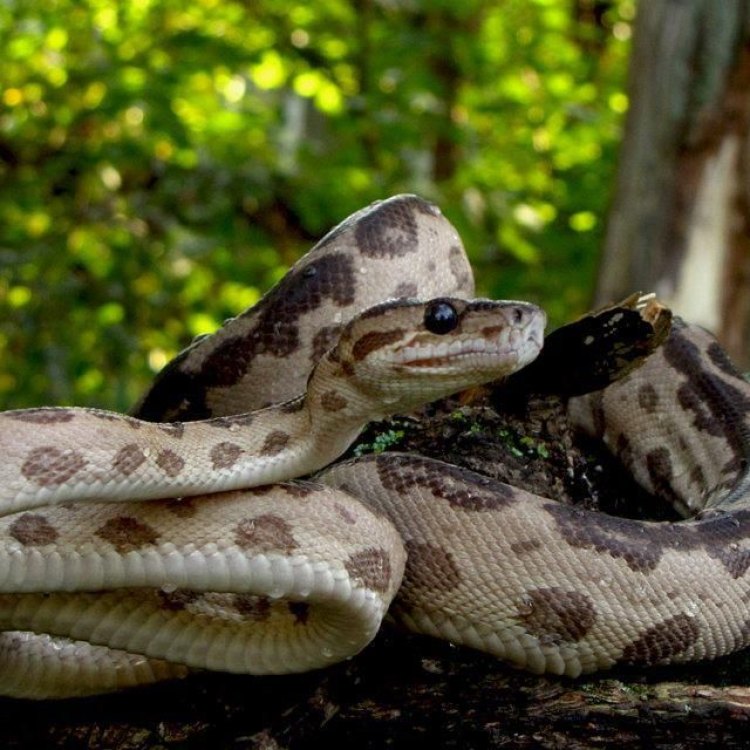
The Majestic Cuban Boa: A Fascinating Snake Found Only in Cuba
Disclaimer: The content provided is for informational purposes only. We cannot guarantee the accuracy of the information on this page 100%. All information provided here may change without prior notice.

